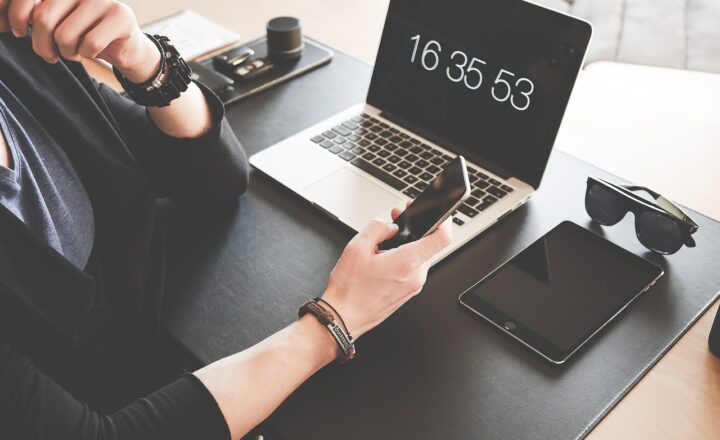
Minimalism is more than just a design trend or a way to declutter your space; it’s a lifestyle choice that has profound impacts on our well-being and happiness. In an era dominated by consumerism and material possessions, minimalism provides an attractive alternative that encourages us to focus on what truly matters in life. This comprehensive guide delves into the principles of minimalism, its benefits, and practical steps to help you embrace a more simplified way of living.
1. What is Minimalism?
Minimalism can be defined as the intentional choice to live with less in order to make room for what truly adds value to our lives. This can encompass physical possessions, mental clutter, and even relationships. The essence of minimalism lies in eliminating distractions that do not serve a meaningful purpose, thus allowing individuals to focus on experiences and values that enrich their lives.
While minimalism varies for each individual, the core philosophy emphasizes freedom from excess, both materially and mentally.
2. The Benefits of Minimalism
The attraction of minimalism goes beyond simply having fewer things; it offers several significant benefits:
- Reduced Stress: A cluttered environment can lead to anxiety and stress. Simplifying your space helps create a calming atmosphere, allowing for greater mental clarity.
- Increased Focus: By eliminating distractions, you can focus better on important tasks, whether they be professional projects or personal goals.
- Financial Freedom: Minimalism encourages mindful spending. By purchasing less, you can save money and redirect your finances toward experiences rather than material goods.
- Enhanced Relationships: With fewer distractions, you can invest more time and energy into meaningful relationships rather than superficial ones.
- More Time for What Matters: Living minimally means having more time to pursue passions, hobbies, and self-care activities that contribute to overall happiness.
As you can see, the benefits extend well beyond just your physical belongings. Minimalism fosters a more fulfilling life experience.
3. Embracing Minimalism: Practical Steps
If you’re intrigued by the idea of minimalism and are considering making it a part of your life, here is a step-by-step approach to begin your journey:
- Assess Your Current Belongings: Take time to evaluate what you own. Ask yourself, “Does this item add value to my life?” If not, consider donating, selling, or discarding it.
- Set Clear Intentions: Define what minimalism means to you. Be specific about the areas of your life you’d like to declutter, whether it’s your home, wardrobe, or even your digital assets.
- Start Small: Begin your journey with one area at a time. It might seem overwhelming to tackle your entire home, so start with a single drawer or room.
- Declutter Regularly: Adopt a routine of reviewing your belongings periodically. Regular maintenance ensures that clutter does not reaccumulate and you stay aligned with your minimalist intentions.
- Limit New Acquisitions: Before making new purchases, evaluate the necessity of the item. Practice intentional shopping by waiting a few days before buying new items to ensure they are genuinely needed.
- Digital Minimalism: Don’t forget to declutter digital spaces as well. Unsubscribe from unnecessary emails, delete unused apps, and organize files on your devices to create a serene virtual environment.
Making these practical changes will help you embark on a minimalist lifestyle gradually.
4. Overcoming Challenges in Minimalism
While the journey towards minimalism can be rewarding, it often comes with its challenges:
- Sentimental Attachments: Letting go of items with emotional value can be difficult. Acknowledge your feelings, but remember that memories are not stored in objects.
- Social Pressures: Friends and family may not understand your minimalist approach and could pressure you to keep items or partake in consumerism. Stay true to your values and communicate your reasons firmly.
- Fear of Missing Out (FOMO): You may feel tempted to acquire trendy items for fear of being left out. Recognize that true fulfillment comes from experiences, not possessions.
By acknowledging these challenges and actively working through them, you can continue to thrive on your minimalist journey.
5. Lifestyle Changes Beyond Possessions
Minimalism extends beyond physical possessions to encompass a mindset shift that can impact various areas of life. Here are some additional lifestyle changes to consider:
- Mindful Consumption: Be intentional about what you consume—this includes food, media, and experiences. Prioritize quality over quantity in every aspect of your life.
- Prioritize Experiences: Shift your focus from collecting material goods to collecting meaningful experiences. Traveling, trying new activities, or spending quality time with loved ones can create lasting memories.
- Simplify Commitments: Evaluate your commitments and let go of obligations that drain your energy and don’t align with your priorities. Focus on what truly matters to you.
Implementing these lifestyle changes can further enhance the benefits you experience from adopting minimalism.
Conclusion
The art of minimalism offers a transformative approach to living, inviting us to shed the excess and focus on the essence of what truly fulfills us. By embracing this mindset, prioritizing experiences, and letting go of unnecessary clutter—both physical and mental—you can create a more meaningful and fulfilling life. Minimalism is not merely about living with less, but rather about making space for what truly matters. By taking practical steps towards minimalism, you embark on a journey to living more intentionally, proving that less truly can be more.
Are you ready to start your journey? Begin today by taking the first step—declutter a small space and reflect on what you want to invite into your life. With each step, you’ll discover more about yourself and what brings you joy.








